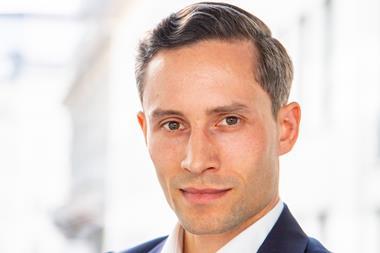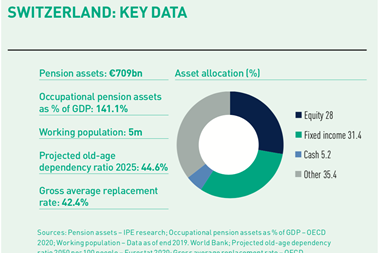The Swiss Federation of Trade Unions, SGB USS, is recommending the country’s government reinforce its first pillar pension system (AHV) to reduce the gender gap in pension payments harming mainly women.
“If we want to support women in pensions, we need to focus on the AHV because there are mechanisms that work,” Gabriela Medici, deputy head of secretariat for SGB USS, told IPE, explaining that all women with an AHV pension could be reached.
The median monthly pension in the AHV for men is CHF1,936, while for women is CHF1,754, according to the Federal Statistical Office (FSO).
“There is almost no difference in the level of pensions between men and women in the AHV because there are mechanisms that ensure support for the level of pensions for women and these mechanisms work,” Medici explained.
The gender gap becomes more noticeable for occupational pensions, with men receiving a median monthly pension of CHF2,217 and women CHF1,165, according to FSO.
Medici said the difference between the level of pensions for men and women in the second pillar is prominent.
The gender gap in pension payments is mainly the result of different professional careers, the FSO said, adding that women are more likely to take time off from work and work part time.
Wage gaps between women and men also result in different levels of occupational pension benefits, it added.
The Federal Council wants to increase the retirement age for women in statutory and occupational pensions from 64 to 65 years old with the reform AHV 21. The reform aims to secure the financial stability of the first pillar.
The retirement age for women will gradually increase by three-months per year over a period of four years. The parliamentary social security and health commission has already approved the proposal.
Compensation
But SGG USS has calculated that with the new measure women will suffer a loss on their pensions of CHF1,200 per year. “We have a critical view of the plan for the reform of the AHV that would hit women with another cut on pensions,” Medici said.
The government has planned measures to compensate women who are at the verge of retirement when the reform comes into force. Early withdrawal of pensions for women who were born between 1959 and 1967 will not result in large cuts.
Women with an annual income of up to CHF56,880 can withdraw their AHV pension from the age of 64 without cuts, and women with low to medium incomes who work up to the retirement age or beyond receive a higher pension.
The costs of the compensatory measures will amount to CHF700m in 2031, the government said.
However, Alex Kuprecht, president of the Council of States and a member of the Swiss People’s Party (SVP) – who also formed a working group to find a common ground for a reform between SVP, FDP, CVP and Green Liberal parties – told IPE that how much compensation women should get “will be the difficult question” politically.
The group has instead suggested lower compensation measures for women in the range of CHF450m-550m.
The union meanwhile has started an initiative to increase the AHV pensions called 13xAHV, “since in parliament the debate on the issue is at a standstill,” Medici said.
“The initiative foresees a supplement on the monthly pensions and we believe that we can gather enough signatures to increase the AHV,” she added.
The government’s proposal for the second pillar reform also foresees recipients of old-age and disability provisions of occupational pensions receiving a lifelong monthly pension supplement that gradually decreases every five years during a transition period of 15 years, from CHF200 to CHF100.
“There are also improvements to make for occupational pensions, but they do not reach all women because there is still one third of women who do not have a pension within the second pillar [system],” Medici said.











No comments yet